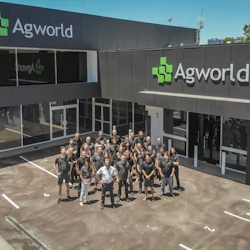Anyone who reads this title will probably think: “well, isn’t this the case every year?” And yes, indeed, profitability is always important, and the bottom line is the main driver for decisions every cropping season. Coming off a season like we’ve seen in 2018 however, profitability in 2019 might be key to survival for many growers. As many publications like Forbes have written recently, farm bankruptcies are on the rise, falling commodity prices and rising interest rates are to blame.
Grain prices have been falling since 2012 and have caused farm revenues to drop by 50%, while the recent trade tensions have had an add-on effect for some crops, especially soybeans. A 50% drop in revenue would be devastating for most businesses; but for farmers even more so as input costs have not ceased to increase and opportunities to generate alternative revenue are not readily available to most growers. Many growers have experienced extreme weather events in 2018, such as the prolonged drought currently seen in Australia or the hurricanes we saw earlier this year in the eastern states of the US. Some of these growers have not had an income for multiple seasons, which is very hard to manage financially, even for those that were well-prepared.

Got what it takes to join the Agworld team? We’re looking for talented individuals to help us deliver innovative solutions in agriculture.
Most farm businesses are not able to reduce their risk by making the significant operational cost reductions needed either, as fuel, seed, chemical and fertilizer prices tend to rise instead of fall, and the amount of inputs needed cannot be lowered dramatically either without having an immediate impact on yield. Interest is another cost that has started to rise now that the Federal Reserve has been raising its interest rates for the past three years. During seven years of low interest rates, many growers increased their overheads by purchasing new machinery and land. Now that interest rates are increasing steadily, many growers are starting to feel the pinch. So, what can growers do to ensure they survive and thrive? And, equally important, what can service providers do to help their clients stay in business and ensure they stay in business themselves? To put it in one word: communicate. Everyone working in or with agriculture knows that times are tough at the moment and that many growers are operating on extremely tight margins. Nobody likes to see even a single grower go out of business and providers are almost always willing to help growers find solutions, as long as they are aware of the specific challenges growers might be facing.
But, what does ‘communicate’ look like in this scenario? In my opinion, it is about facing the facts, preparing both financial and production plans together with all your farming partners and communicating updates as the season progresses. So, make a detailed plan and budget together with your agronomist, financial advisor, account manager from your bank and whoever else might be involved. Ensure that these stakeholders have access to your plans and all other farm data as the season progresses, and your plan gets executed on. By accurately forecasting costs and keeping track of expected yields and commodity prices, your farming partners can ensure you have everything you need to grow a crop throughout the season, without them having to compromise on their own cost-mitigation strategies.
Is this process only applicable to growers that are feeling the financial pressure? I personally think that extensive planning and budgeting in collaboration with suppliers and advisors will soon be best-practice for the whole agricultural sector. Globalisation is causing price-compression everywhere as growers are exposed to world-market pricing and costs like interest and inputs are not likely to go down any day soon. By creating a plan, growers are giving their suppliers the ability to see the plan, respond and execute timely and efficiently.
The good news? Planning and budgeting are all about forecasting and managing your risk and rewards better. The better you are at this process, the better your farming partners are positioned to help you. When should you start? Yesterday ideally, but today will be fine too; just don’t treat it like most farmers treat planter-maintenance, because a proactive approach provides room to think and make the decisions best for your business, not someone else’s plan driving your responses and decisions!





